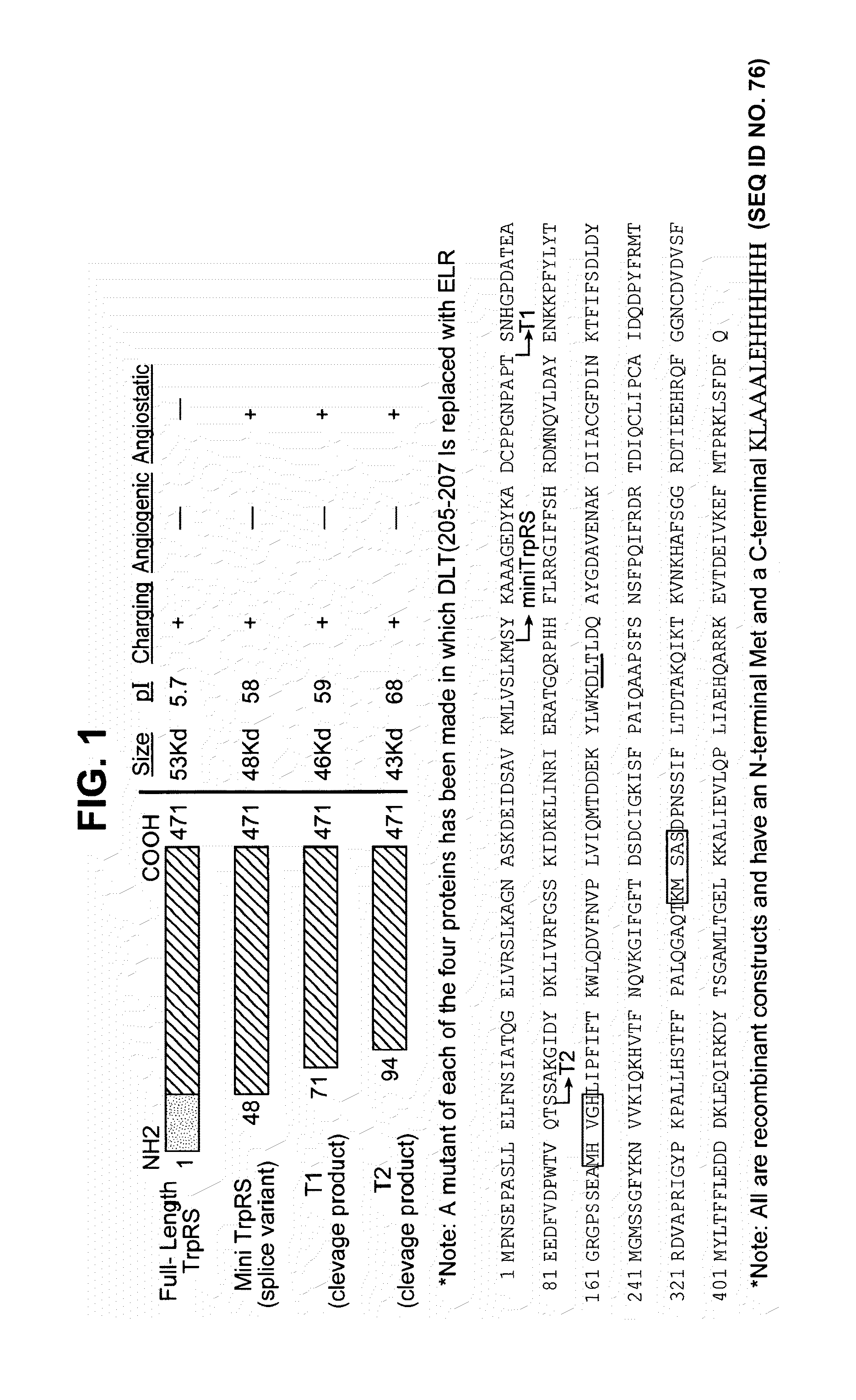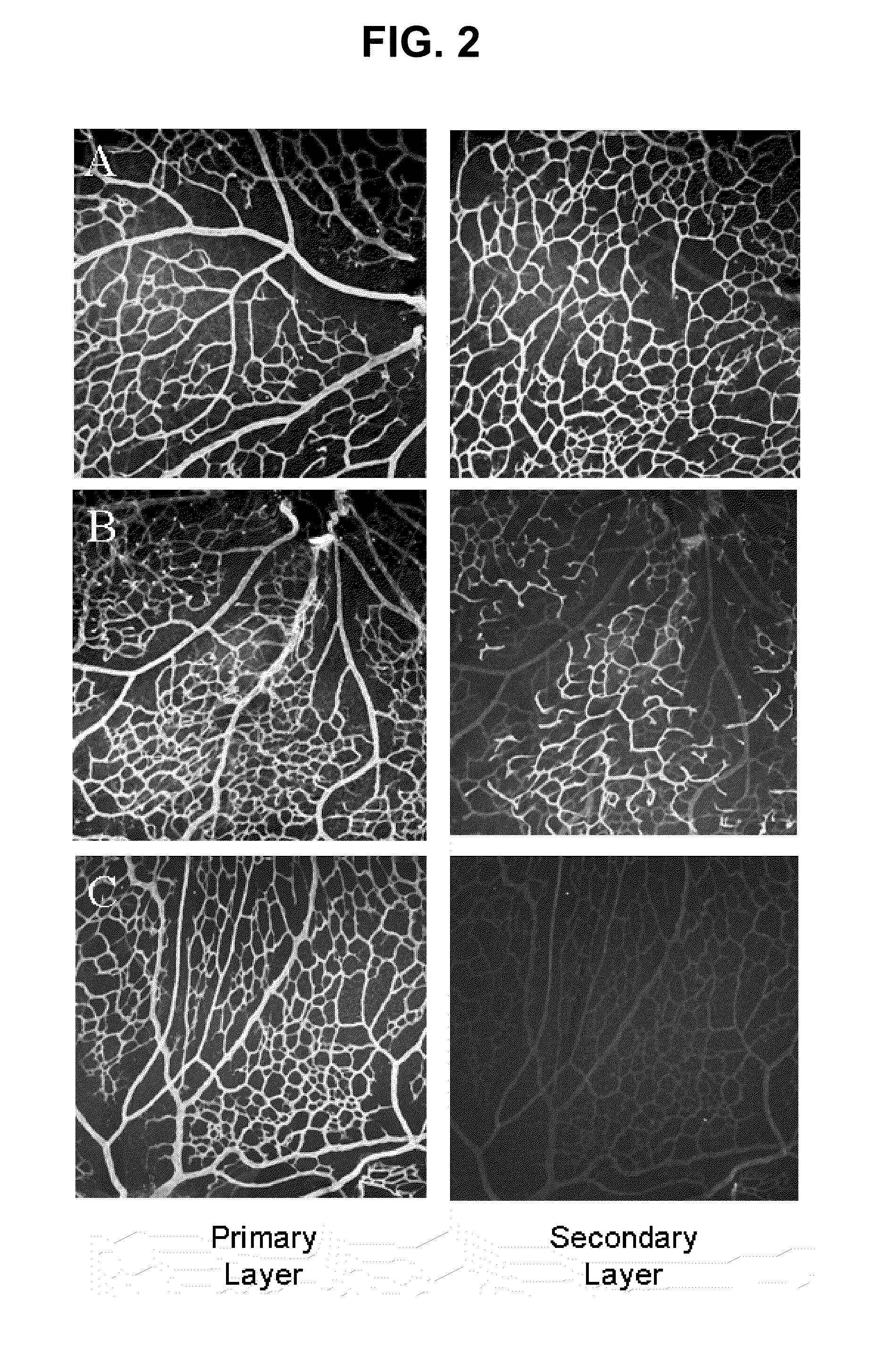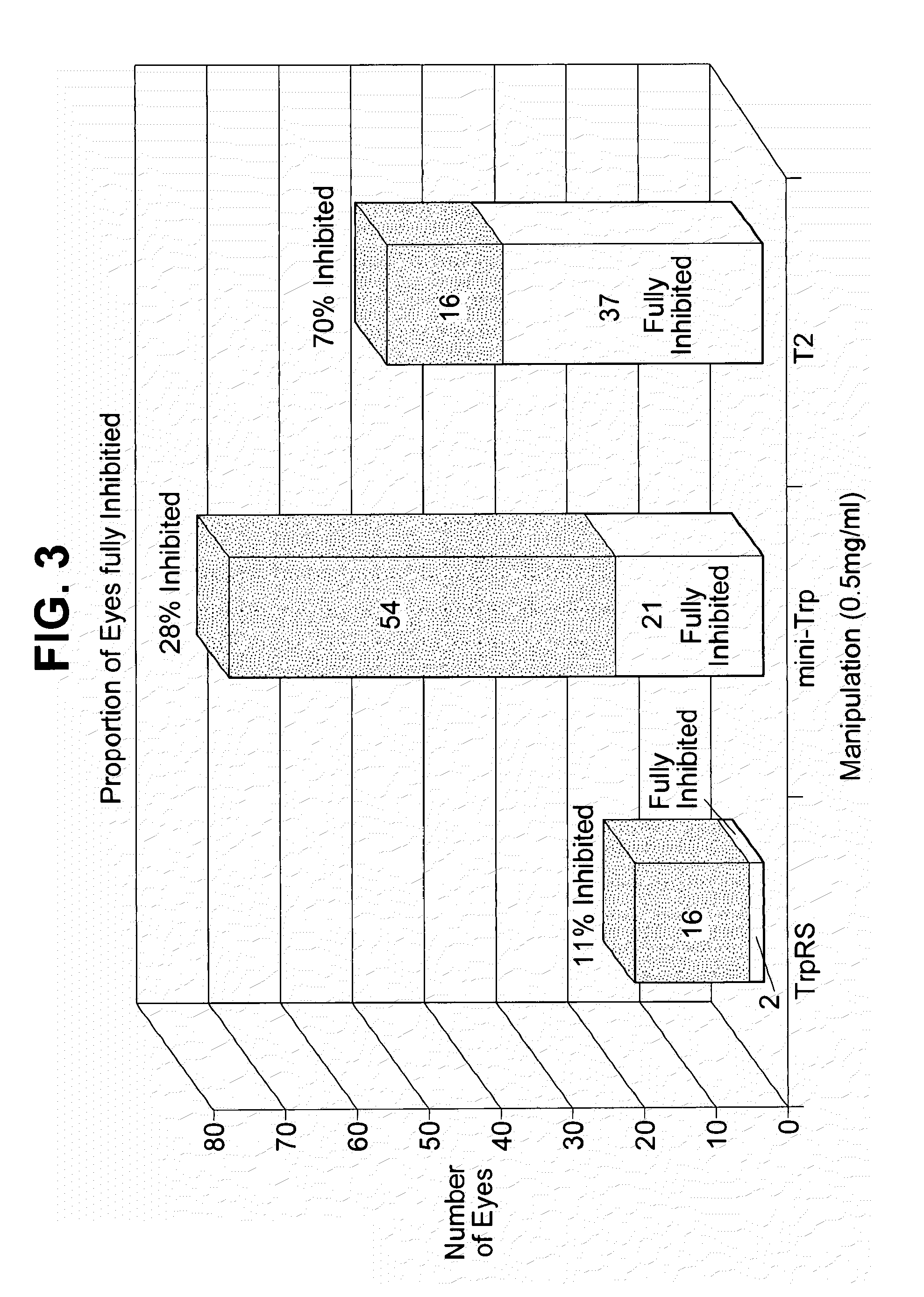tRNA synthetase fragments
a synthetase and fragment technology, applied in the field of trna synthetase fragments, can solve the problems of not being able to provide a polypeptide preparation substantially free of endotoxins, not being able to reduce etc., and achieve the effect of reducing the amount of endotoxins
- Summary
- Abstract
- Description
- Claims
- Application Information
AI Technical Summary
Problems solved by technology
Method used
Image
Examples
example 1
Preparation of Endotoxin-Free Recombinant TrpRS Purified by Laboratory Techniques (Nickel Affinity Column and Triton X-114)
[0486]Endotoxin-free recombinant human TrpRS (GD and SY variants) were prepared as follows: Plasmids encoding full-length TrpRS (amino acid residues 1-471 of SEQ ID NO: 1 and the SY variant thereof), or truncated TrpRS, hereinafter referred to as T2 (SEQ ID NO: 12 (GD variant) or SEQ ID NO: 24 (SY variant)), consisting essentially of residues 94-471 of full length TrpRS and a second truncated TrpRS fragment, hereinafter referred to as T1 (SEQ ID NO: 13 (GD variant) or SEQ ID NO: 25 (SY variant)), consisting essentially of residues 71-471 of full length TrpRS were prepared.
[0487]Each plasmid also encoded a C-terminal tag consisting of six histidine residues (e.g. amino acid residues 472-484 of SEQ ID NO: 1), and an initial methionine residue. The His6-tagged T1 (SEQ ID NOS: 13 and 25) had the amino acid sequence of SEQ ID NO: 5 (or SY variant thereof), whereas th...
example 2
Cleavage of Human TrpRS by PMN Elastase
[0490]Cleavage of human full-length TrpRS by PMN elastase was examined. TrpRS was treated with PMN elastase in PBS (pH 7.4) at a protease:protein ratio of 1:3000 for 0, 15, 30, or 60 minutes. Following cleavage, samples were analyzed on 12.5% SDS-polyacrylamide gels. PMN elastase cleavage of a full-length TrpRS of about 53 kDa generated a major fragment of about 46 kDa (SEQ ID NO: 5, T1, having the C-terminal histidine tag, or an SY variant thereof) and a minor fragment of about 43.5 kDa (SEQ ID NO: 7, T2 having the C-terminal histidine tag or the SY variant thereof). In particular, cleavage of full-length TrpRS (SY variant) by PMN elastase generated a major fragment of about 46 kDa (SEQ ID NO: 25) and a minor fragment of about 43.5 kDa (SEQ ID NO: 24).
[0491]Western blot analysis with antibodies directed against the carboxyl-terminal His6-tag of the recombinant TrpRS proteins revealed that both fragments, which were apparent at approximately 46...
example 3
Truncated Fragments of Trp-RS Show Potent Angiostatic Effect for Retinal Angiogenesis
[0493]Angiostatic activity of truncated forms derived from full length tryptophanyl-tRNA synthetase was examined, in a post-natal mouse retinal angiogenesis model. Friedlander et al. (Abstracts 709-B84 and 714-B89, IOVS 41(4): 138-139 (Mar. 15, 2000)) reported that postnatal retinal angiogenesis proceeds in stages in the mouse. The present invention provides a method of assaying angiogenesis inhibition by exploiting this staged retinal vascularization.
[0494]Endotoxin-free recombinant mini-TrpRS and T2 (e.g., SEQ ID NOS: 12 and 24) were prepared as recombinant proteins. These proteins were injected intravitreally into neonatal Balb / C mice on postnatal (P) day 7 or 8 and the retinas harvested on P12 or P13. Collagen IV antibody and fluorescein-conjugated secondary antibody were used to visualize the vessels in retinal whole mount preparations. Anti-angiogenic activity was evaluated by confocal microsc...
PUM
| Property | Measurement | Unit |
|---|---|---|
| purity | aaaaa | aaaaa |
Abstract
Description
Claims
Application Information
 Login to View More
Login to View More - R&D
- Intellectual Property
- Life Sciences
- Materials
- Tech Scout
- Unparalleled Data Quality
- Higher Quality Content
- 60% Fewer Hallucinations
Browse by: Latest US Patents, China's latest patents, Technical Efficacy Thesaurus, Application Domain, Technology Topic, Popular Technical Reports.
© 2025 PatSnap. All rights reserved.Legal|Privacy policy|Modern Slavery Act Transparency Statement|Sitemap|About US| Contact US: help@patsnap.com



